Cats rescued from shuttered Sheepshead Bay nursery school as activists clash with NYCHA officials • Brooklyn Paper
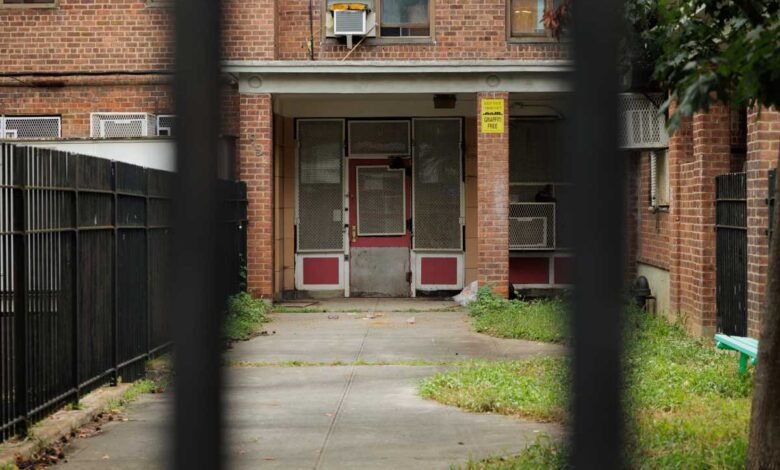
At least five feral cats who had been trapped inside a shuttered school at Sheepshead Bay Houses were freed by rescuers and NYCHA employees this week as the felines’ predicament — and the city’s response — sparked controversy in the neighborhood.
Becky Wisdom, who runs the nonprofit Greenpoint Cats, said a local rescuer raised the alarm that cats were stuck inside the old Beachbrook Therapeutic Nursery School on Avenue X on about July 28.
The feral felines could be heard crying and trying to get out, Wisdom said, but the doors and windows were closed and locked, and staff had recently sealed a hole the cats had been using to get in and out.
When a NYCHA operations worker spoke with rescuers outside the building, he confirmed the hole had been collapsed as a rat control measure, video of the interaction shows, but said the cats had been “smoked out” first, and insisted the nursery school was “cat-free.”
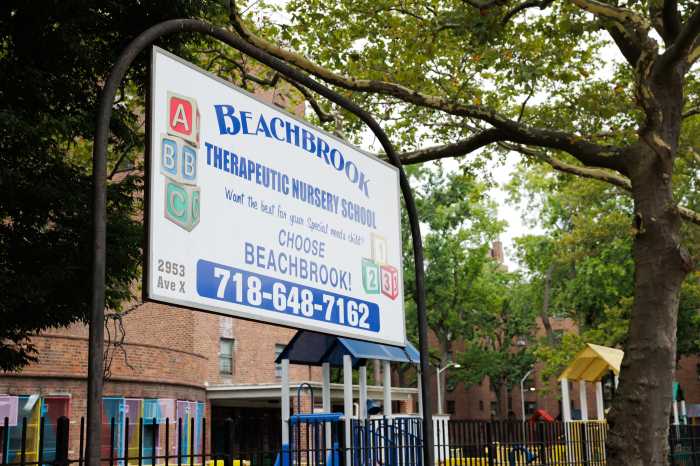
A NYCHA spokesperson said the agency received a report of cats stuck inside the school on July 26, and dispatched trained staff to search the building and leave out food, water, and cameras to monitor for any cat activity.
But rescuers said the agency was uncommunicative, and weren’t sure if anything was being done at all. Beachbrook is owned by NYCHA but leased by a third party, and the property manager couldn’t give rescuers access without permission from the tenant, Wisdom said, though they did agree to pass on her contact information.
As the days passed and temperatures climbed, rescuers grew frustrated and concerned that the cats might not survive. Greenpoint Cats, Puppy Kitty City, and Midwood Kitty Cats posted about the predicament online, urging their followers to contact NYCHA and demand action.
Finally, Wisdom said, she got a call from Rachel, who runs the nursery school, who was initially doubtful that there were cats inside.
“No one seemed to believe that cats hide,” Wisdom said. “They’re not necessarily going to come strolling out and say ‘Thank you so much, we’re so happy you’re here,’ and stroll out the door. They’re still going to feel like prey, and you’re a predator, and their instincts are going to be to hide. And they’ll hide until they die, sometimes, because they’re so scared.”
Rachel agreed to meet two rescuers, Martha Mongtomery from Puppy Kitty City and Olga Gudyno from Midwood Kitty Cats, at the nursery school on the night of July 30.
“It’s a huge place, horrible conditions,” Montgomery said. “The air full of mosquitoes, a lot of humidity.”
Photos and videos shot by Montgomery show dirt and grime on the floors and holes in the wall and ceiling. She saw the water and cameras set out by NYCHA staff, but no food.
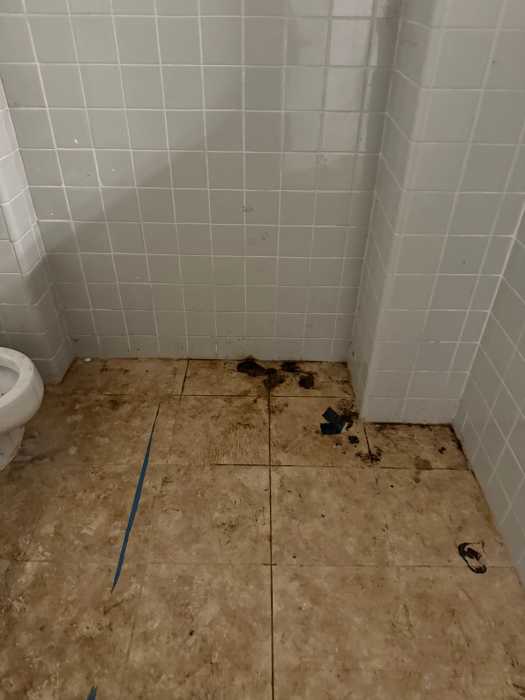
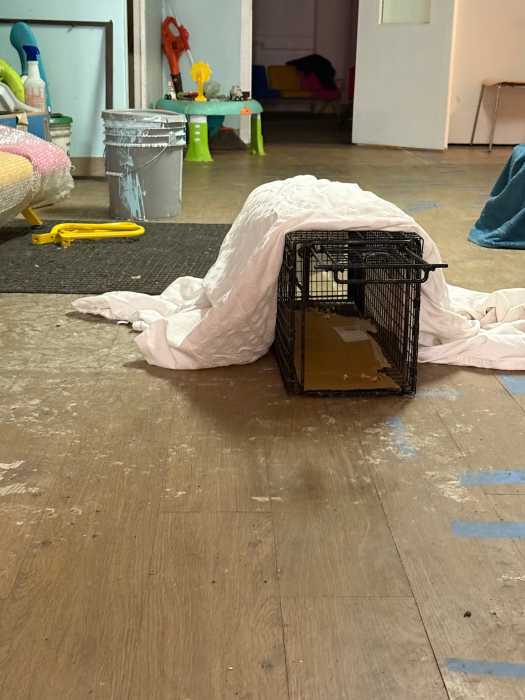
“Obviously, they don’t know, because water won’t attract the cats,” Montgomery said. “They needed food.”
Montgomery quickly netted one young cat who was trying to get outside, she said, but she and Gudyno spent hours combing through the school’s rooms without success and opted to set traps and head home for the night.
The next morning, two more cats had made their way into the traps.
All three were fairly young, Montgomery said, and the first one she trapped, who is now at Puppy Kitty City, was probably less than a year old. All three appeared dehydrated and underweight.
The youngest cat was scared and skittish, she said, but friendly.
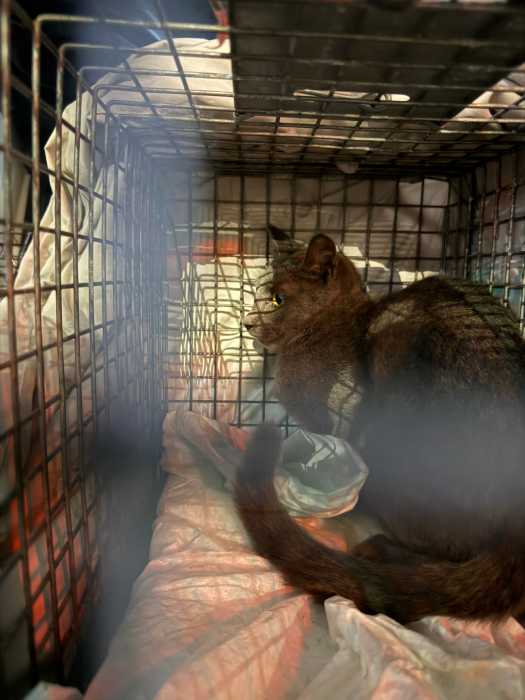
“There could be more Brooklyn,Housing,New York,News,Animal rights,animal welfare,anne-levin,beachbrook-therapeutic-nursery-school,becky-wisdom,brooklyn-bridge-animal-welfare-coalition,cat-rescue,cats-trapped,cute-animals,fuzzy-brooklyn,greenpoint-cats,martha-montgomery,midwood-kitty-cats,Neighborhoods,New York City Housing Authority,newsletter,NYCHA,puppy-kitty-city,rescue,Sheepshead Bay,Sheepshead Bay Houses,stray-cats,vet-care in the walls,” Montgomery said. “We couldn’t find them, there’s a lot of places they could hide.”
As of July 31, NYCHA had removed two “live, unharmed cats” from the property, said spokesperson Michael Horgan.
“The Authority, in coordination with the relevant and responsible city agencies, continues to monitor the space and conduct regular searches to locate and safely remove any cats that enter the location,” Horgan said.
By Aug. 1, a fourth feline had been spotted in a window, Wisdom said. Rescuers plan to keep returning to rescue any additional cats. When Brooklyn Paper stopped by on Friday morning, no cats were visible inside, though two were roaming nearby, and there were several bowls for food and water near the fence.
Brooklyn Paper was not able to reach the nursery school’s operator, but Wisdom said she had been “nothing but helpful” in helping save the cats.
A symptom of a larger issue
Feral cat colonies are not uncommon on NYCHA properties, Wisdom said, and rescuers are regularly left frustrated with the agency as they try to help out.
“Every month we probably rescue or trap and least two or three cats from various NYCHA properties,” she said. “There’s really, sadly, no support and no enforcement of best practices.”
Montgomery said she has seen cats trapped inside buildings and crawl spaces. It’s not uncommon for NYCHA to close those spaces off altogether, she said, like they did at Beachbrook.
“They don’t allow anybody else to feed them, and the cats can’t even get out to get food,” she said. “It’s nothing new.”
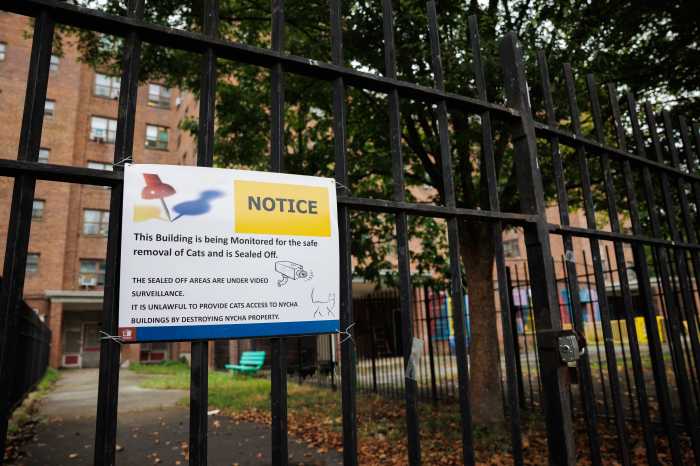
“We try to solve the problem, and other people create it, and we don’t get no support from anybody,” Montgomery said. “It’s cruel to see the suffering.”
NYCHA does contract with one local organization, the Brooklyn Bridge Animal Welfare Coalition, to help with cat populations on NYCHA campuses.
Anne Levin, executive director of BBAWC, said the org is “constantly working” at various properties. But there are more than 300 NYCHA developments across the five boroughs, and many have feral cat populations. BBAWC can’t respond to each one, she said, and isn’t called in every time. She wasn’t contacted for the situation in Sheepshead Bay, she said.
NYCHA is so large and relatively siloed, she said, and each property is “very unique.” At some, staff are very aware of the cats and the residents who care for them. At others, the cats are largely ignored.
“The people that we work [with] at NYCHA I think honestly try to do their best and care about the situation,” she said. “There’s often concern about getting in trouble, a lot of the employees are also NYCHA residents, so that certainly affects their fear of an employer who gets upset with them.”
Independent rescuers like Wisdom and Montgomery also do a lot of their own work on NYCHA campuses, she said, without financial support from the city.
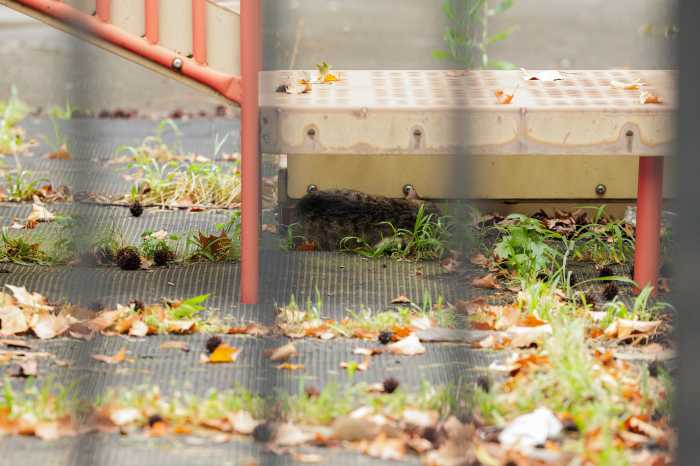
The number of strays in New York City has skyrocketed in recent years as inflation and the rising cost of pet supplies and vet care left pet owners scrambling. Rescuers are inundated with animals, and desperate for resources, Levin said. Last month, Animal Care Centers of New York City was forced to suspend intake of new animals after its facilities hit max capacity.
In some cases, the relationship between rescuers and city agencies like NYCHA has become strained, she said.
“I think it’s really unfortunate that these situations have to escalate to this degree,” she said. “I also think that it is true that the city doesn’t prioritize the animals that are in the city, and it does mean that rescuers are not being listened to, are not respected … and it can be very difficult to know and trust that just because they’re not responding to you or letting you know more information doesn’t mean they’re not acting to help the cats.”
Wisdom said she would like to see the city take a “deeper look” at its animal welfare standards at NYCHA properties citywide.
“It is now becoming clear that this is a problem that is systemic,” she said. “You could talk to every rescuer in New York City, and everyone will have a NYCHA story … it’s really just time for change, and I think this is the moment.”





